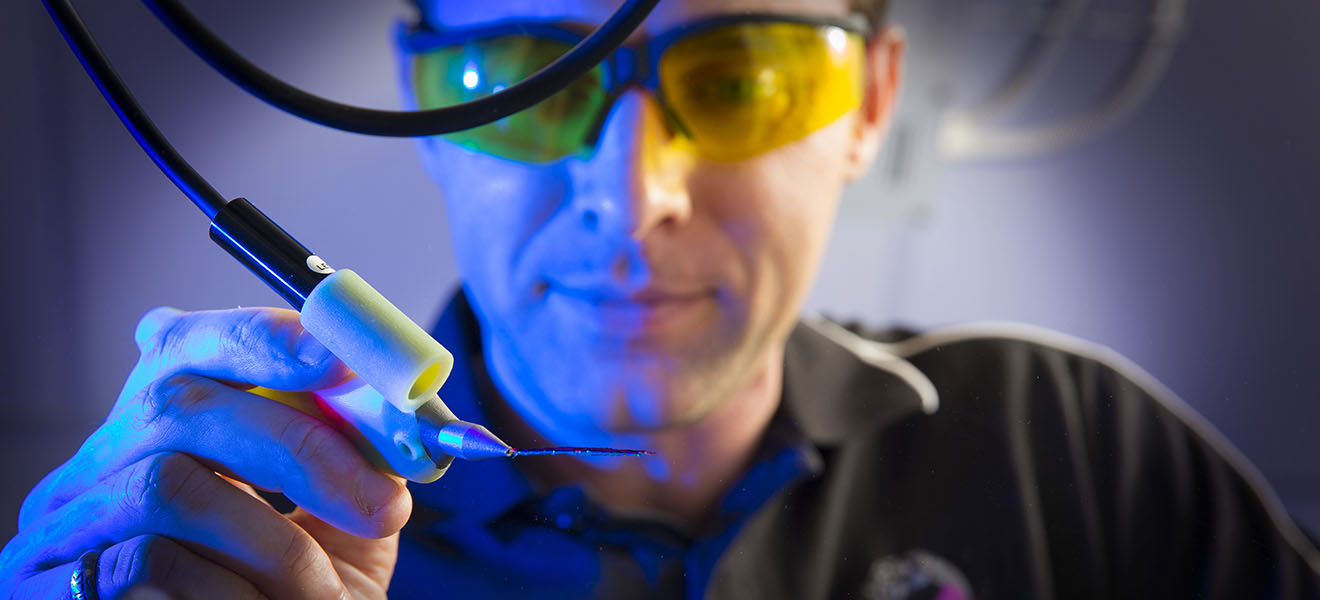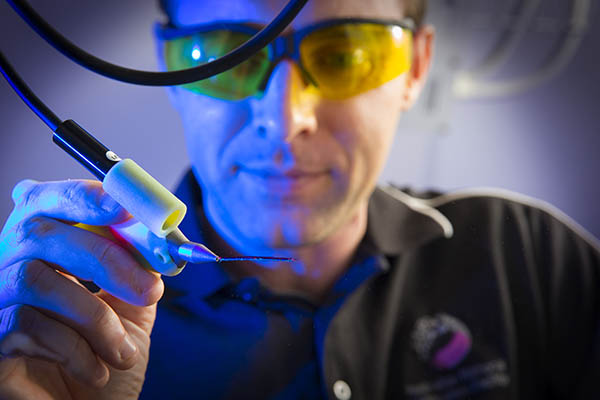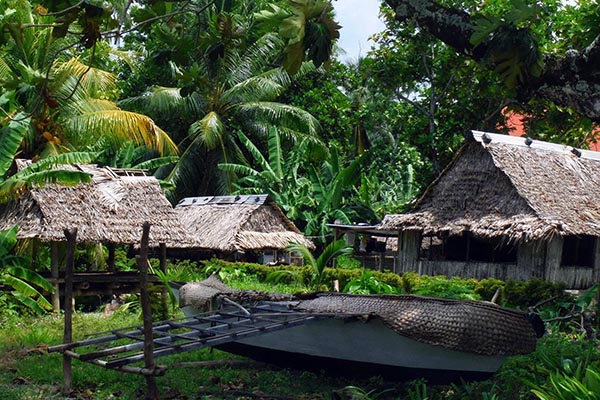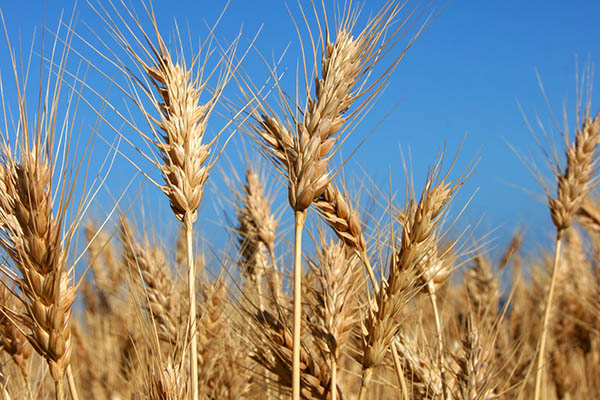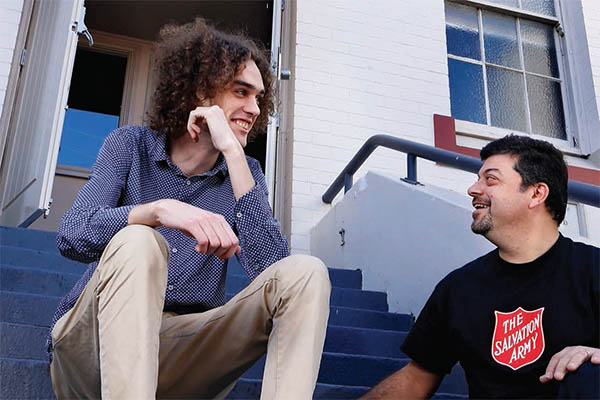Scientists and clinicians combine to provide bioengineering solutions for human disease
Fast-tracking the translation of fundamental materials research discoveries into devices for patient benefit is the focus of clinical connections established by the ARC Centre for Electromaterials Science (ACES), headquartered at the University of Wollongong.
The partnerships are driving innovative projects which rely on the convergence of advances in 3D printing and materials science research to change the landscape of healthcare.
These include applications for wound healing, controlled drug delivery implants for the treatment of epilepsy and cancer, as well as new implants for glaucoma and the bionic ear.
Another ground-breaking example is the Biopen. It promises patients with arthritis – and other conditions or injuries – a personalised intervention that encourages the body to heal itself.
ACES and collaborators at St Vincent’s Hospital in Melbourne developed the Biopen to help surgeons design implants during surgery, using the patient’s own cells and growth factors to accelerate the regeneration of functional bone and cartilage.
Using a hydrogel bioink to carry and support living human stem cells, and a low powered light source to solidify the ink, the handheld ‘pen’ has delivered a cell survival rate in excess of 97 per cent in laboratory trials.
The device, the brainchild of orthopaedic surgeon Professor Peter Choong from St Vincent’s Hospital, Melbourne, was designed to offer a solution for people at risk of developing osteoarthritis, a painful condition which occurs when there is damage to
joint cartilage.
His team, along with that of ACES Director Distinguished Professor Gordon Wallace, worked together to design, refine and fabricate the biopen and the bioink that enables optimal performance.
This revolutionary technology is currently being trialled in animal studies for cartilage regeneration, with results from one trial repairing cartilage defects in the knees of sheep returning exceptional results in terms of quality and characteristics of new cartilage formation.
The next step for the partnership is to look at the long term efficacy of the treatment in animal models, and to explore options for commercial development of the biopen.
Partner organisations
St Vincent’s Hospital, Melbourne
Sydney Eye and Ear Hospital
Melbourne Eye and Ear Hospital
Royal Adelaide Hospital
Sydney Eye Bank
Wollongong Hospital
Sydney Adventist Hospital
UOW participants
Distinguished Prof. Gordon Wallace, Dr Stephen Beirne, Dr Zhilian Yue
